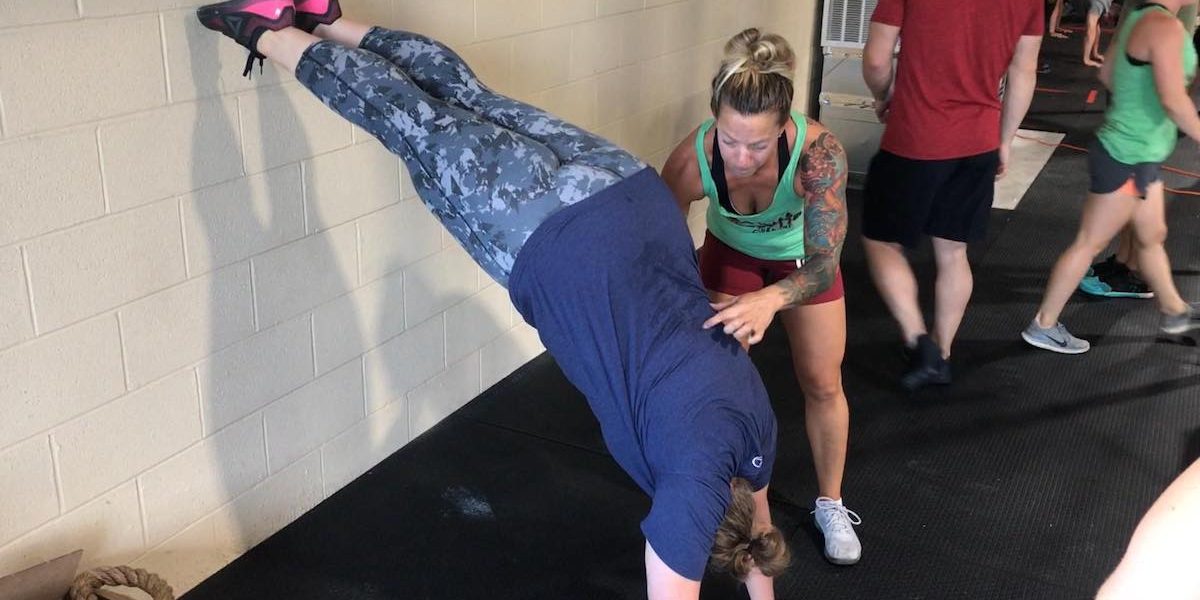How to be a Successful Coach
I’ve been a coach in some capacity for the last decade of my life. While I would never claim to be an absolute expert on the topic, I’ve picked a few things up along the way. One of my favorite things to do is to help new coaches improve their skills.
After shadowing many a functional fitness class, I’ve noticed three main personas most coaches fall under.
- The Cheerleader: Happy and peppy, they always have a few words of affirmation for their clients and never even a whisper of constructive criticism.
- The Drill Sergeant: I’m not sure they know how to smile, and prefer to ‘motivate’ by pushing people as close to puking as possible.
- The StopWatch: Spends the most time shuffling athletes from station to station, mostly focused on “3, 2, 1, go!” and letting their athletes know exactly how much time is left on the clock. Barely says a word otherwise.
These three coaches have the best intentions, and, depending on the situation, we may need to shift gears and lean towards one or the others. Though Sgt Pukey can tone it down a bit. When I talk to new coaches after their class, they essentially ask the same question: “How?”
“How do you know the mobility problem is in their hips, not their ankles?”
“How did you know that cue was going to work for that person, and now they can kip their pull-ups?”
“How did you know to strip the weights off that person’s bar mid-workout?”
“How did you know how to scale that particular movement for their junky shoulder?”
These new coaches stick to their strengths – cheering on athletes, pushing them, or just structuring the class – because they simply don’t know how to add the missing pieces. Maybe, since you’re reading this article, you’re one of them. So, I’ll let you in on the great secret behind how to be a better coach: coaching more.
FOMM – Fear of Making Mistakes
Okay, okay, before you roll your eyes and give up on this article, let me explain. I didn’t “just know” how to creatively scale movements. Or what specific cues to give someone to improve their snatch. Or when to push an athlete in a workout and when to back off. I had to practice coaching as much as I had to drill technique before getting my first muscle up.
Many new coaches have FOMM – Fear of Making Mistakes, so they default to what’s easiest. Being the cheerleader or yelling at someone until they throw up. Coaching is a skill that has to be developed. You have to be educated, but you also have to try. Not everyone learns the same way, so you have to find multiple ways to explain a movement. Sometimes this is visually, sometimes with a verbal cue. I hate to tell you this, but sometimes that cue is going to sound WAY better in your head than it did coming out of your mouth.
Never Stop Learning
Education is important to understand how and why people should move in certain ways and not others. It takes practice to learn to effectively communicate what you’ve learned to others. A long-winded explanation in the middle of what should be a 5 minute conditioning piece does the athlete no good. Nor does a complicated, philosophical explanation of perfect jerk dip depth. The true sign of an expert in their field is the ability to take a complicated concept and explain it in concise wording easily understandable to the beginner.
Shadowing more experienced coaches can be incredibly beneficial, as well. They may have cues that resonate with you and seem to work for their athletes. Maybe they catch minor technique flaws more readily. But coaching isn’t a cut and paste profession. What works well in their gym with their clients will have some carry over to your own, but I’ve yet to find a cue that works 100% of the time for every single athlete in the gym. (Heck, even a simple “knees out” in a squat has produced some… interesting results a few times here and there)
In the End, It’s About People.
Coaches need to be a people person. No, you don’t need to be a warm and fuzzy coach, but you need to learn how to read people. Some people like being pushed, others need some gentle hand-holding occasionally. And sometimes those individual needs change depending on the day. (*Raises hand as someone who’s accidentally made someone cry*)
If you think you have a clever cue or accessory work that can improve a client’s technique, try it! It may fail for someone and work better for the next person. The only time a failure is a waste of time is if you don’t learn from it and try something else. Regardless of how long you’ve been in the business, it is important to be both confident in your abilities and humble in the limits of your area of expertise. There’s always more to learn, always new ways to explain a concept. Coaching is an art and can take years to truly be proficient. Don’t get frustrated when something doesn’t click. Keep trying new cues or exercises, and don’t be afraid to ask for help if you’re stuck. A few years from now, new coaches could be looking up to YOU for answers “How.”

